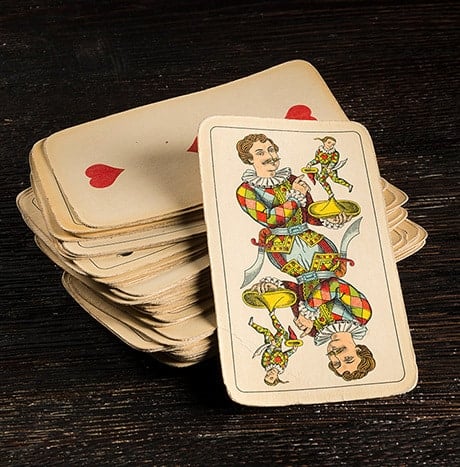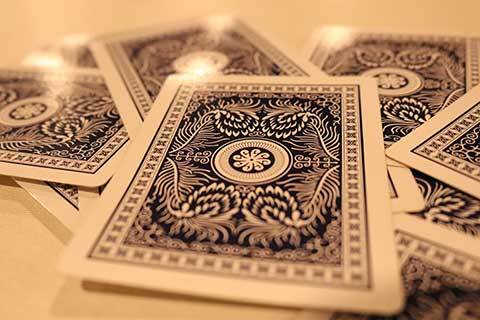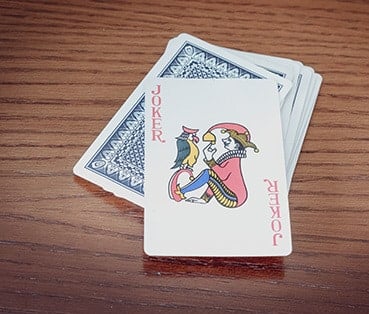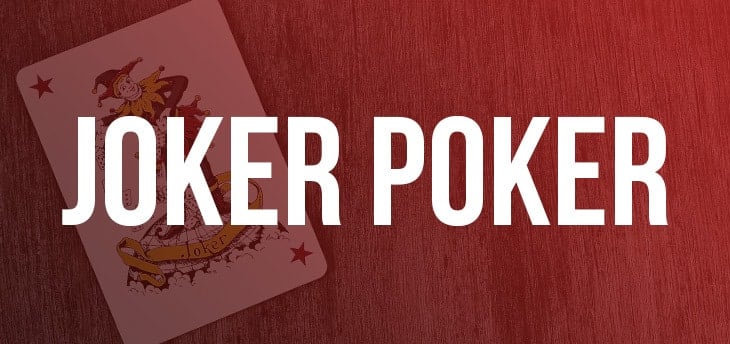One thing you’ll learn after playing a ton of poker is that it doesn’t just refer to Texas Hold’em. It has so many variations, allowing it to appeal to a much wider audience.
Hold’em is the standard, perfect for those who love the fast pace and aggression involved. Omaha allows players to enjoy slower, more draw-focused games. Some variants, like Pineapple Poker, appeal to casuals, providing crazy, entertaining games.
One rare thing, even with all these variants, is the presence of jokers. Some believe jokers are never used in poker, but that’s untrue. They can be perfect for home games and are used in several casual poker variants.
Today, we’ll cover the history of jokers in poker and the few types of modern-day poker that still use the iconic wild cards.

Jokers during the civil war
The earliest usage of jokers wasn’t actually in poker. Most believe they were introduced to the card game euchre in the mid-1850s. Euchre was actually incredibly popular, and considered the national card game of America from 1850 to 1910. At the time, card manufacturers liked to include an extra “blank” card in their 32-card euchre decks.
While rules stated that the blank card wasn’t meant for use in actual play, a variation of the game developed where the blank card actually became the highest-ranking trump. Before being known as the “Joker,” it was simply known as “The Best Bower” because Bower is the term given to euchre’s highest-ranked cards.
The imagery of an imp, clown. or jester on the blank card became standard by around 1870. Companies often design the card differently from the rest, including their own branding. The blank card also became known as the “Joker,” a fitting name for the other court-themed face cards and representative of its wild card nature.

Jokers meet poker
The Joker was introduced to poker around 1875, which was about the same time it transitioned to a 52-card deck instead of 20. At the time, poker, brag, and euchre were all very popular, played on riverboats along the Mississippi River. Brag was the first game that utilized a wild card, which was the Jack of Clubs.
The wild card took different names since the Jack of Clubs was already used for poker and euchre. Euchre got “The Best Bower,” while poker’s wild card was called the “Mistigris.” However, the use of the wild card in poker was eventually phased out as the game spread throughout the US. It got dropped from Texas Hold’em, which originated in the 1900s and would later become the world’s most popular form of poker.
Five-card draw
Five-card draw is one of the simplest forms of poker, which is why it’s incredibly popular for home games. There are no community cards, and only two betting rounds. Each player receives five cards, then the first round of betting begins.
After the first betting round, players can exchange any number of their cards for an equivalent amount in the “draw” round. They can also “decline” the draw and stick with their five-card hand. Then, after everyone has drawn or declined, one last round of betting happens before the showdown.
Five-card draw is also one of the poker variants where jokers are regularly used. They’re used as “bugs,” a special kind of wild card with limitations on the hands they can create. Bugs can be used either as an ace or to complete any straight, flush, or straight flush.

Ace-to-five lowball with Joker
Ace-to-five lowball, also known as California Lowball, is another poker variant that can use jokers. If you’re unfamiliar with what “lowball” means, it’s poker slang for a game that uses inverted hand rankings. The best hands are actually the “weakest” ones following standard poker rules; hands like 5-4-3-2-A or 7-5-4-3-2, depending on the rules, reign supreme in lowball.
Lowball poker has a few variations, and ace-to-five is among the most popular. Here, straights and flushes aren’t considered, but pairs are. Aces also function as the lowest card, below two, so the best possible hand would be 5-4-3-2-A.
The joker version adds a single joker to the deck, making it 53 cards. The joker is used as a wild card instead of a bug, becoming the lowest possible card that’s not already in the hand. For example, if Player A has 6-5-4-3-2 against Player B’s 5-4-3-2-Joker, B wins. The joker is considered an ace, which is lower than Player A’s lowest card, two.

